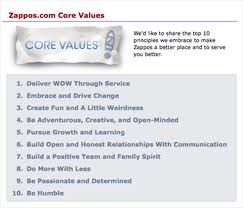
Inductions represent the most teachable moment companies have with new starters. They are an ideal time to align staff and contractors with what your company stands for...
Jane leads a team of 30 software programmers for a large insurance company. After months of slavishly working on a new sales tool to promote to car dealerships, the head of operations informs Jane that the company’s strategy has changed. The new direction means months of rework. Jane’s team feel deflated. Rather than celebrate a successful launch, they’re stuck with renegotiating contracts, dealing with the frustration from other internal departments and various technical challenges. Scepticism abounds with the new strategy. Jane urgently needs to restore trust and counteract the growing cynicism of her team.
As a team manager, Jane is not responsible for setting the vision. After all, the product strategy was changed at the top. Her responsibility is to get everyone motivated and embrace the new direction. This isn’t easy because all her employees are suffering from sunk cost bias, a thinking trap that causes people to think irrationally. Sunk cost bias occurs when employees can’t let go of a project because they have invested so much time and effort into it. Think Coca-Cola continuing to produce New Coke, even when there were many indicators it would fail. Unable to face reality and cut their losses, management launched the product. It was lampooned in the media and the company received 40,000 complaint letters. Some even consider it the biggest marketing blunder of all time. While Jane’s issue is not this severe, she still has employees more likely to make bad decisions, because of their irrational attachment to their past efforts.
So how do you energise and galvanise the team around a new course, when everyone is still grieving the old one?
Great workplaces and great cultures are built on trust, and high-trust organisations champion clear, transparent communication that unifies everyone together, so that they feel they are part of a special team. High trust teams perform at a higher level and get work done faster.
The danger is that Jane’s employees will fall into a low trust mindset, if she fails to redirect her employees in a way that helps them to buy-in to the change, rather than lip service. Low trust causes friction – slowing down progress, reducing collaboration and creating misunderstandings.
Instead of seeing the setback as a negative event, Jane has the opportunity to reframe the new direction, so that employees view the stumbling block as a way to refine their approach and improve their outcomes. She now can highlight the learning opportunities and keep her team focused forward, so that everyone can see that their time wasn’t wasted.
Let’s take a look at a five step process Jane needs to follow to help her colleagues understand the changes, but also see the meaning behind the work that they do. It addresses all the questions employees ask, even if it is just in their head. The result is to build trust and align the team, in order to ensure the culture is performing optimally.
Jane has several different audiences to articulate the change in direction. First of all, she needs to talk to her own programmers. The second step is that she needs to talk to sales, marketing and customer service. Before she talks to any of them, she needs to sit down and plot out who she needs to influence within each department. The department leader in marketing has very different needs to the customer service department. Like a marketer, she needs to plan what each audience needs to know, what information would motivate them and what objections they would have.
Typically, a manager in Jane’s situation tells everyone there’s been a change, explains what it is and how it needs to be handled (while possibly throwing in a few complaints about leadership in the process). This is more likely to erode trust levels and it isn’t sufficient to counteract the inherent sunk-cost bias.
To restore trust, Jane needs to provide an emotional connection to the information to get buy-in. She needs to communicate to the part of the brain that manages trust -the mammalian or limbic brain. This old part brain is not a thinking brain, but a survival brain, designed to keep us alive in times of danger. It is responsible for our feelings (such as trust and loyalty), decision making and handling stress.
But the real kicker is that it has no capacity for language. Jane has to communicate to the limbic brain, which can’t decipher why it made a decision in language. Remember, her employees are a risk of being stuck in sunk cost bias mode, so she needs to access their limbic brains to get through to them. To do that, she needs to start with emotion – why the change was required and the thinking behind the decision. The truth is people are not as interested in information if they don’t know why. It gets them to lean forward and makes it a much higher priority in their life.
Additionally, she needs to unite the team by providing the meaning behind the work through linking the job to be done to a higher purpose (such as helping customers protect their assets and eliminating financial loss). Through connecting to the company purpose or even the team’s purpose, she is able to hit emotional buttons and get buy-in.
Jane says: “Upon further research, management have realised there appears to be greater demand for the new sales software in both car and light commercial vehicles than previously thought. If we were to release the software to motorbike dealerships only, we would disappoint around 55% of dealerships and produce a product that is too short-sighted. There is also concern the product is too complicated to use. Longer term, this is the right thing for our customers and our goal to continue being the industry leader and work with dealerships to improve their sales conversions. A more integrated software solution is the way to achieve that. “
Once everyone understands why the change was necessary, then it’s time for Jane to describe the new vision. Ideally, she uses image-based words to describe the future. Research studies have found that leaders who communicate using image-based words are more likely to succeed with executing the strategy than those using abstract words or numeric goals. This means she needs to talk about how the customer user experience will look like. By talking about the outcome, she gets people thinking in terms of outcomes, rather than activities, resetting the bias towards past effort.
Jane tells her crew, “As you know the user experience is paramount. We want to get this right and ensure that users can intuitively access the information they need across all vehicle types. Imagine a sales professional sitting in his office with a new car buyer who is dubious about being sold to. The dealer visually displays clear, colourful charts on the computer that easily show much money the customer will save by choosing our insurance. Our goal is to create software that sales staff love, so that we can help them provide a better insurance price for their customers.”
The next part of the process is for Jane to let everyone know how the change will affect them. This means confessing that it involves longer hours, throwing away previous work and that there are difficult challenges that might first appear unsolvable, but they will work it out as they go. It’s important that she links employees’ self-interest with the company purpose and she explains “what’s in it for them”, such as how much they will learn or how it will help their careers. It’s also important that she lets everyone know that she believes in them and the task at hand. By honing in on each person’s individual strengths and contributions to move forward, she builds trust even further.
Jane’s response: “I know that you have all worked very hard on this software and sacrificed your personal time. I’d be lying if I said there wasn’t much work to do. This is a tough project that will frustrate us at times. At this stage, I don’t even know how we will do it. But we will figure it out. After the last six months of seeing how we have all pulled together as a team, I believe that we can all achieve this target. This is a very important job and your name will forever be tied to the success of this ground-breaking project.”
Finally, Jane can explain the new tasks. But more importantly, she elicits feedback as to what the team believe needs to be done to make it work and reduce any further hassle. This shows that she is listening. She also checks for understanding by asking “what have you understood from this conversation?”
Jane’s response: “Our first major step is to meet with key clients and get their input on the current design by the end of next week. While we wait for feedback, what do you believe we need to do?”
People are naturally suspicious of change and innovation, especially when they do not see the long-term benefits. This all boils down to trust and why it’s so important that every leader continually works on becoming a high-trust leader. By building enough trust capital, leaders and organisations are much more able to pivot the organisation successfully during change efforts.
While Jane is responsible for articulating the vision and aligning her team, the CEO, board and executives are all responsible for creating a high trust organisation and a sense of shared purpose. Without the support of leadership, her efforts of trust-building would only affect the team on this particular project. Long term, she would need more organisational support to improve employee engagement.
Trust is essential to unite employees into a cohesive group. When people are working towards a meaningful goal, trust is a natural response. Leaders have a highly influential role to play in building teams and the communication choices they make or don’t make, can help build trust or erode it.

Inductions represent the most teachable moment companies have with new starters. They are an ideal time to align staff and contractors with what your company stands for...

In the seminal book Built to Last, by Jim Collins and Jerry Porras, they discovered that what made great companies better than good companies was that great companies...